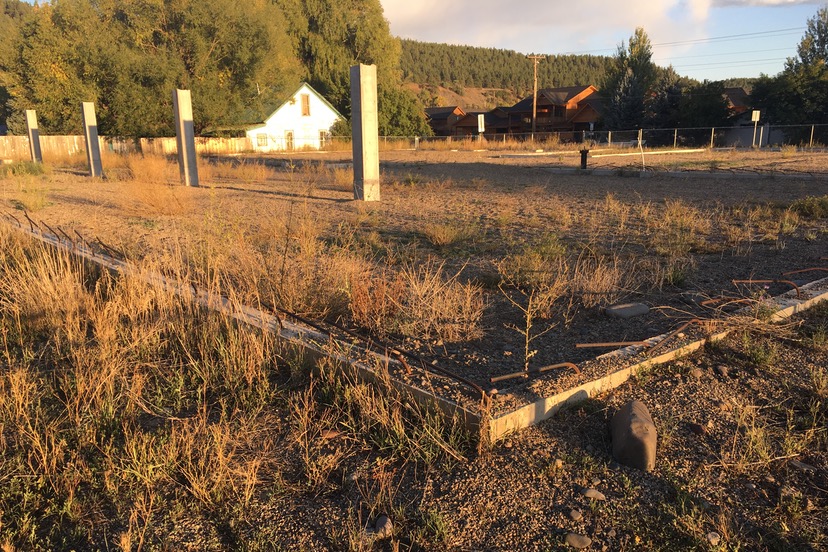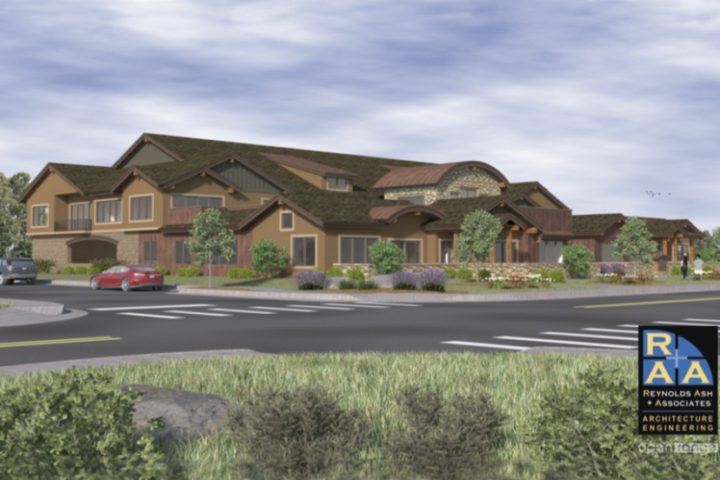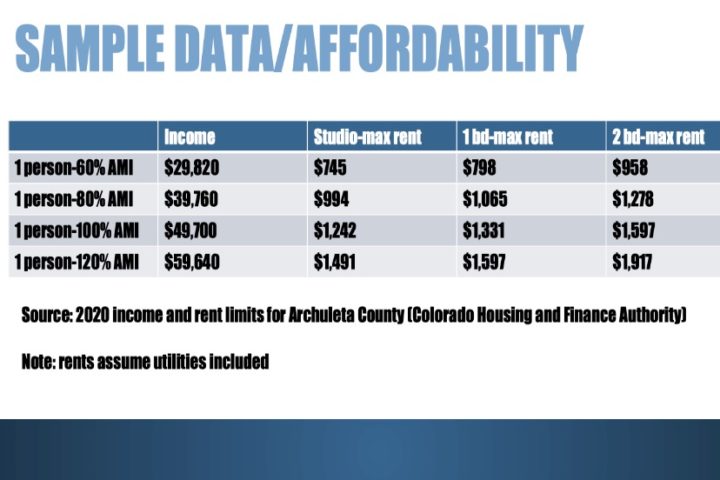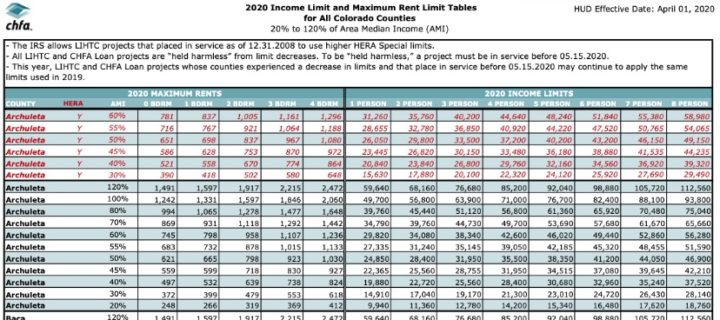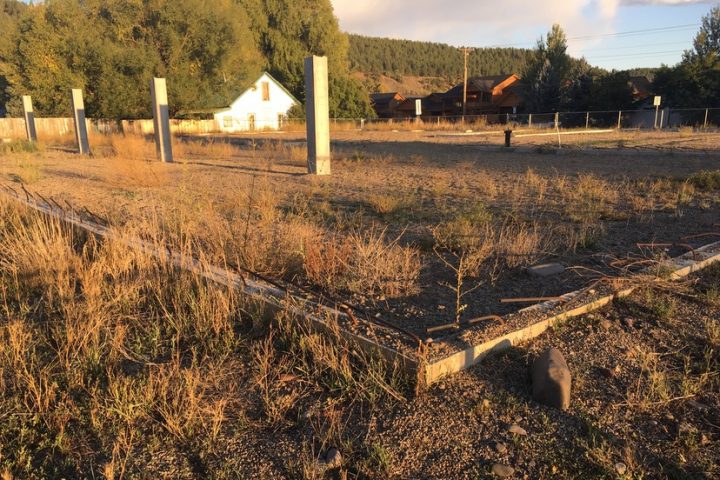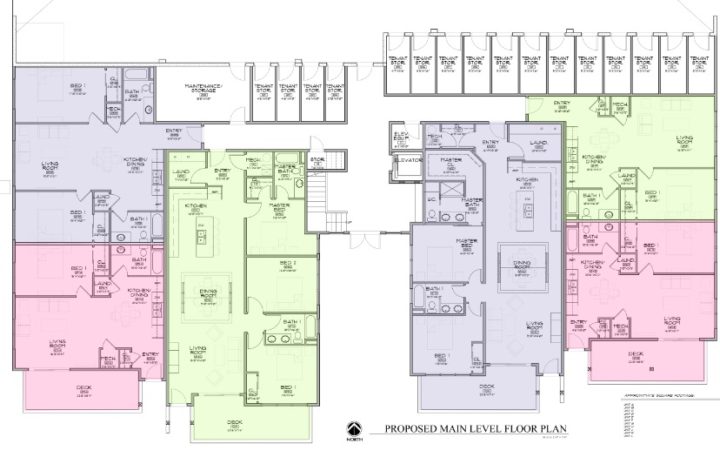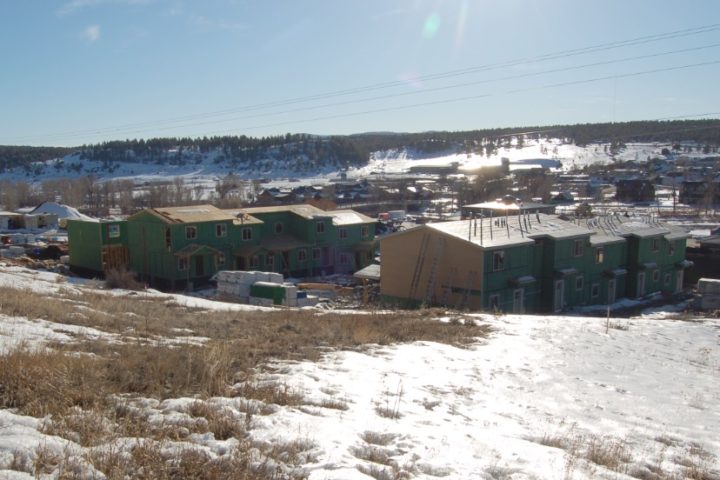At the February 2 Town Council meeting, two possible approaches for addressing the community’s documented housing crisis were discussed, mainly by Town staff. I wrote briefly in Part One about one of the approaches — namely, the approval of a Tiny Homes On Wheels development somewhere within the Town limits. (The proposed location was not revealed during the meeting.)
The second housing discussion focused on a residential lot recently purchased by the Town, on the corner of Apache and South 5th Street, surrounded by a mix of historical working-class homes and more recent, upscale town homes.
The corner lot was abandoned by a previous owner after a foundation had been poured for a planned condominium structure that might have looked something like this:
Here is Town Manager Andrea Phillips introducing the idea of a Town-owned parcel that would somehow end up providing affordable housing for some demographic:
“Deed restricted housing is really just… including in the recording of the deed, any kind of restrictions we might want to ensure stay with the property. And that could be related to employment. So for instance, if this is truly a workforce housing project, we want people who are working in Archuleta County to be living there. If they are not working in the county, we probably don’t want to make a unit available to them, for instance.
“We could put long-term restrictions on income, on the resale price if it were to be a for-sale unit, occupancy limits, short term rental restrictions — like, it’s long-term only, for instance — it really can be whatever is most advantageous for the long-term benefit of the property. And those can get recorded with the property itself.
“And again, workforce housing is deed-restricted and occupied by at least one local employee. Some communities have actually developed ‘workforce housing zones.’ For our purposes, I would say our workforce housing zone is probably the [entire county]. Or make it contiguous with our school district boundaries.
“This is information that was sourced from our ‘Roadmap to Affordable Housing’ which was written by Pagosa Housing Partners…”
You can download that ‘Roadmap’ here, if you haven’t already.
Ms. Phillips then shared some “income and rent limits” published by CHFA, the Colorado Housing and Finance Authority.
This slide is somewhat misleading, if anyone wanted to take it at face value. Obviously. Ms. Phillips meant it for illustrative purposes only, because the actual CHFA/HUD income and rent chart applies specifically to Colorado government subsidies for LIHTC (Low Income Housing Tax Credit) projects… and it’s a bit more complicated:
You can find the full LIHTC chart on the CHFA website, here.
If you happened to look in the Residential Rentals section of the weekly Pagosa Springs SUN classifieds last week, you would have found only six listings for long-term rentals, and only three of the listings displayed the monthly rent:
A ‘furnished bedroom in a comfortable home’ for $600 a month…
A ‘room for rent’ for $800 a month…
And a one-bedroom ‘guest house’ for $1,600 a month.
Ms. Phillips continued:
“So the 574 South 5th Street property is, to me, very exciting, because it’s not out in the hinterlands. It’s central to so much of the great stuff we have in our community. Right next to the River Walk. The San Juan River is basically right out the door. Very close to several employers; if someone who lived there worked at the High School, it’s a very short commute. Or at Town Hall. Or what have you.
“Very close to downtown. Very walkable. Close to the Community Center and those amenities. Reservoir Hill. Yamaguchi Park. Of course, there’s a lot of new housing, new development in this area. Very exciting. And the High School is right there as well…”
“Apparently, many years ago, there used to be mobile homes on the site, and those were demolished in 2015… The prior developer went through the whole design process to develop what he was calling, ‘The Pagosa Junction’. That was to be 12 high-end condos. That actually went through the whole design process… and received all the approvals necessary. I don’t know what happened with this gentleman, but I think something happened with him, personally, and the property came up for sale, and the Town purchased it in the fall of 2020, with the goal of building workforce housing through a public private partnership.”
Local architect Brad Ash presented some preliminary floor plans that would make use of the abandoned foundation structures on the half-acre parcel. The sketches suggest perhaps 16 modestly-sized units — mostly one bedroom. Here’s the Main Floor concept, featuring some of the larger units with south-facing decks.
We might find this concept — with an existing foundation, utilities already in place, and access to existing public streets — curiously affordable, as housing projects go.
Comparatively, that is.
Around the corner from this parcel, on Hot Springs Boulevard, another ‘affordable housing’ project is under construction on a gently sloping 2.5 acre parcel, under the sponsorship of the Archuleta County Housing Authority.
This federally-subsidized LIHTC project, Mountain Rose Townhomes, is aimed at low income individuals and families, and will include 34 units — about twice the number that might fit at 574 South 5th Street. The residents will qualify if they make around one-half Pagosa’s median household income. One-half of what an ‘average’ household earns. As I said, low income.
Did I mention, this project will include 34 units? About twice the number currently proposed on South 5th Street?
And did I mention that, due to the sloping terrain, and the lack of existing infrastructure — and other factors — these units will cost about $353,000 each? But will serve ‘low income’ households?
$12 million, in total?
An ‘affordable housing’ project, that was not actually affordable in any realistic sense of the word.
I want us to take a hard look at the “other factors”.

